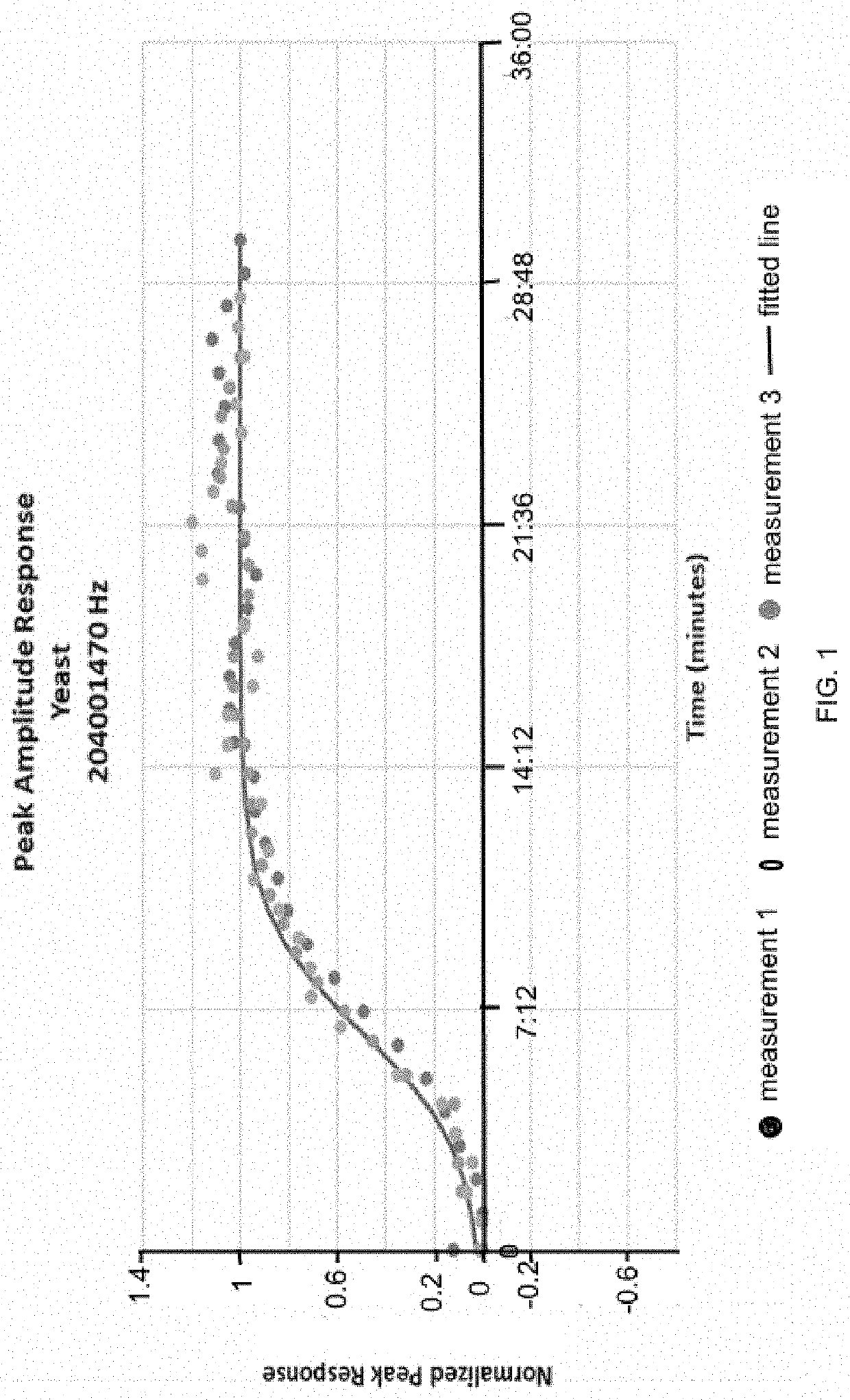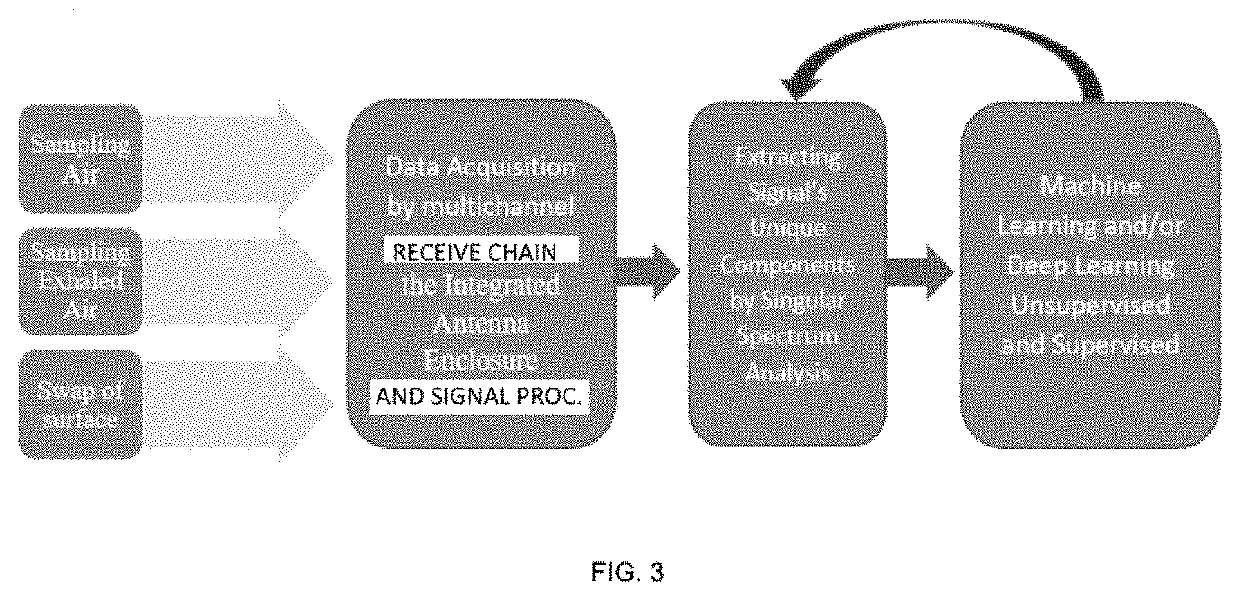RF rapid diagnostics of infection and contamination
a technology of rapid diagnosis and contamination, applied in the field of rf spectroscopy and dielectric spectroscopy, can solve the problems of ineffective detection of viruses outside of closely controlled settings and nasopharyngeal swab, and achieve the effect of reducing the probability of false negative results and increasing sensitivity
- Summary
- Abstract
- Description
- Claims
- Application Information
AI Technical Summary
Benefits of technology
Problems solved by technology
Method used
Image
Examples
Embodiment Construction
[0031]The technical problem is to identified target viruses and pathogens. The solution is to use Dielectric Spectroscopy and RF rotational spectroscopy alone or in combination to identify the virus or pathogen fingerprint.
[0032]Dielectric spectroscopy (DS), is a type of impedance spectroscopy, DS is also a form of electrochemical impedance spectroscopy, that examines the permittivity of a sample. DS describes the dielectric properties of a material as a function of frequency. In DS, radio and microwave frequency regions of the electromagnetic spectrum interact with materials to study their behavior at a molecular level. The interaction of alternating electric fields with dipoles possessing reorientation mobility in materials enables measurements of molecular properties from the resulting electromagnetic responses. DS determines the frequency-dependent complex permittivity of the material. It provides information on molecular dynamics as well as on important m...
PUM
| Property | Measurement | Unit |
|---|---|---|
| spectra | aaaaa | aaaaa |
| vacuum | aaaaa | aaaaa |
| concentration | aaaaa | aaaaa |
Abstract
Description
Claims
Application Information
 Login to View More
Login to View More - R&D
- Intellectual Property
- Life Sciences
- Materials
- Tech Scout
- Unparalleled Data Quality
- Higher Quality Content
- 60% Fewer Hallucinations
Browse by: Latest US Patents, China's latest patents, Technical Efficacy Thesaurus, Application Domain, Technology Topic, Popular Technical Reports.
© 2025 PatSnap. All rights reserved.Legal|Privacy policy|Modern Slavery Act Transparency Statement|Sitemap|About US| Contact US: help@patsnap.com



